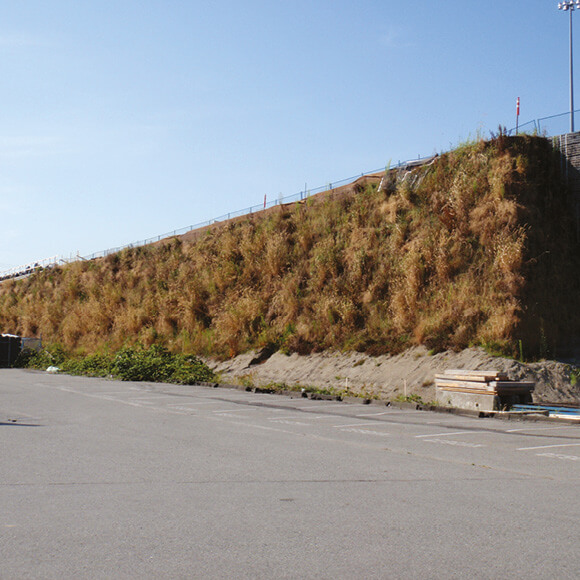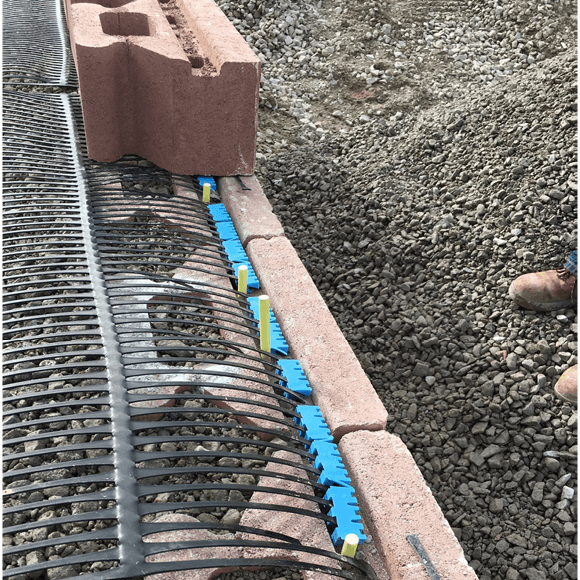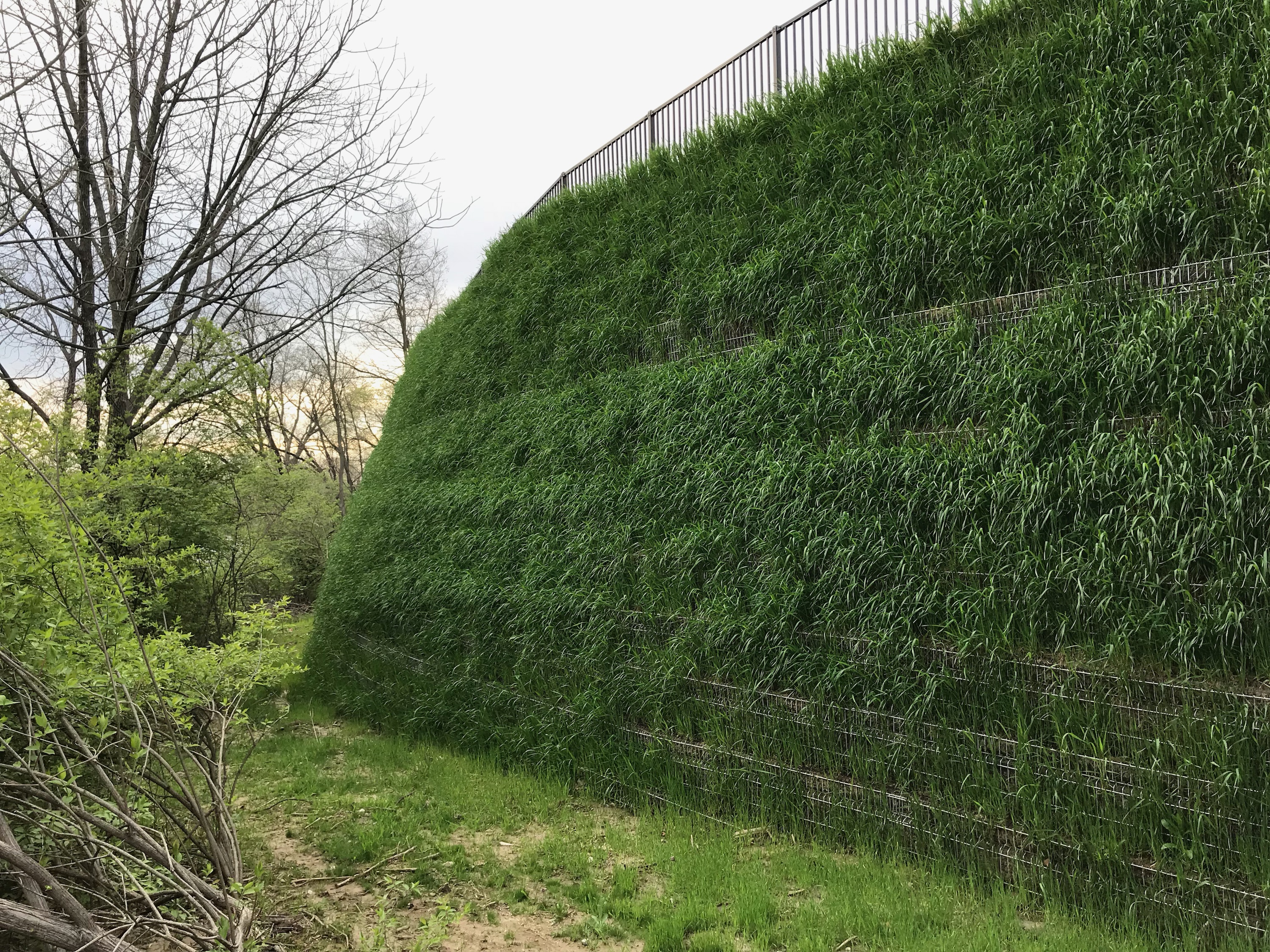.jpg?width=580&height=580&ext=.jpg)
Port Mann Bridge
2009-2011
The Sierra® Slope system helps to create a resilient and cost-efficient slope as part of an undertaking to widen the Port Mann Bridge.
- Owner/Developer: British Columbia Ministry of Transportation and Infrastructure
- General Contractor: Kiewit/Flatiron General Partnership
Budget constraints and environmental concerns favored slope solutions that were more cost-efficient and offered greener profiles. Stringent design criteria called for a slope that could accommodate a projected construction settlement of 15 in. (375mm), a post-construction settlement of 8 in. (200mm), and the ability to withstand a 975-year seismic event.
The project began with a "test" installation in 2009, a 10-foot (3 meter) slope built to reinforce a ditch at a road-widening site. It currently peaks, in every sense of the word, with a massive slope running 774 feet (236 meters) in length, climbing to 30 feet (9 meters) in height, with nearly 21,528 square feet (2,000 square meters) of facing.
Geotechnical engineering firm MEG Consulting Ltd. was contracted to evaluate the properties of the foundation soils and fill materials, including an assessment of the potential for liquefaction and slope response under the seismic loading design conditions. The slope was analyzed using Fast Lagrangian Analysis of Continua (FLAC), the numerical modeling program that determines expected horizontal and vertical ground deformations as well as forces in the geogrid during and after a specified earthquake event. The analysis indicated the slope's "flexible response" and its ability to withstand a 975-year seismic occurrence, maintaining the performance requirements established for the project.



.jpg?width=580&height=580&ext=.jpg?width=300)

